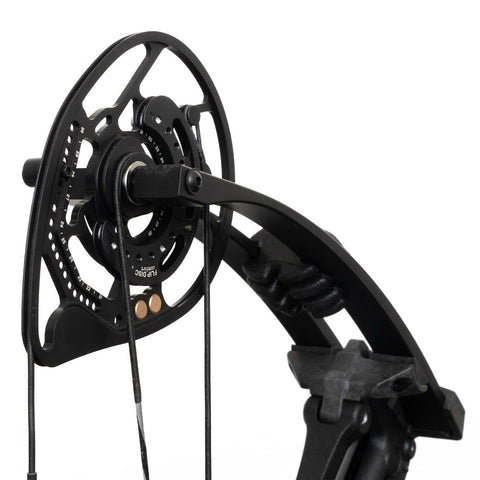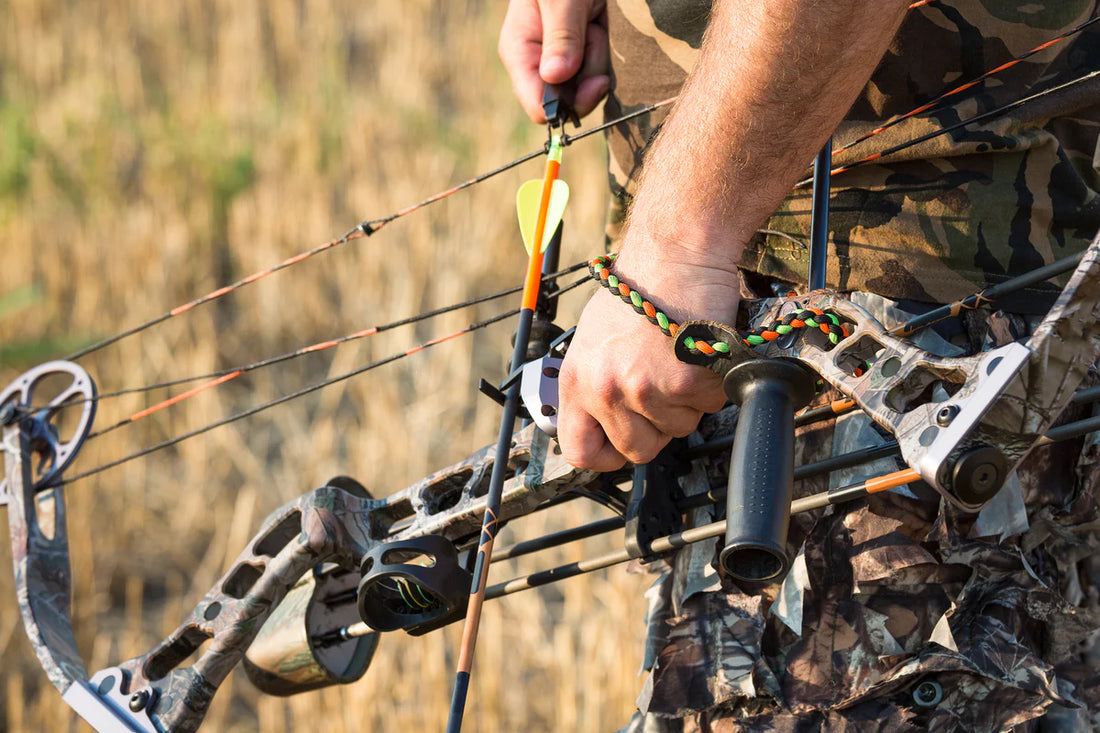Buying a compound bow is a big investment. It's not one you want to make every year, and it’s certainly not one you have to make every year. Even if you're just getting started, there are compound bows that adjust to grow with you, and depending on the age you start, may be the only bow you need to buy.
Yes, there are those who need the "latest" and "newest" every year or every other year, but to truly enjoy the sport of archery, you really only need to invest once, maybe twice, in a compound bow. Now, like most things worth investing in, it should be worth investing the time to properly take care of because the key to a successful hunt is a well-maintained bow.
Compound bows are incredibly popular because of their ease of use and support for accessories. However, these bows also come with significant maintenance requirements to always operate in optimal condition. In this guide, we’ll discuss how you can properly maintain your compound bow.
What Makes The Compound Bow Unique?

-
Levering system
Compound bows use levering systems comprising pulleys and cables, which provide the bowman with an increase in mechanical power. This means less effort is required to deliver energy to an arrow.
-
Rigidness
The compound bow’s main body (riser) is much stiffer than traditional longbows or recurve bows, making it more energy efficient as less energy is expended on excess limb deformation.
-
Support for bow accessories
The riser serves as the mount for other components and accessories, including the limbs, sights, stabilizers, and quivers. Bow accessories are well known to improve shot accuracy and overall archery experience.
-
High performance
Compound bows are highly performant, with draw weights typically between 10-100 lbs; each draw delivers superior power for hunting and exceptional accuracy for target shooting.
Maintaining Your Compound Bow
So, now you know what makes a compound bow unique from other bow types. You also need to know how to keep it in top condition so it lasts longer and serves you well.
In line with that, here are some essential tips to keep in mind:
-
Invest in a quality bow case

If you own a compound bow, this is perhaps the first additional investment you want to make. A compound bow case is incredibly important to you and the safety of your bow in the long run.
As the name suggests, a compound bow case is a protective casing for your bow. For archers who love to travel or those going for hunting trips in the wild, it is important to have a safe way to move your bow around and store it when it’s not being used. The compound bow case does this perfectly.
Bow cases also keep heat and humidity to a minimum and protect your bow from direct sunlight or dust, all of which could be damaging to your compound bow. Water in all its forms is an enemy you want to keep away from your bow. Before storing your bow, clean it thoroughly and make sure it’s void from any debris or water (ice inclusive).
-
Take special care of the bowstrings
The bowstring is the bow’s driving force. Without proper maintenance, your bowstring can malfunction, making your shots less accurate. Ensuring your bowstrings are in good shape is important for performance and safety reasons. Also, properly maintained bowstrings last longer and eliminates the need for frequent replacement.
The easiest way to keep your bow strings happy is by waxing them regularly. Waxing reduces fuzziness and frizzing while also keeping your bowstring strong. You should wax your strings and cables at least once a month when the compound bow is not in use and weekly when the bow is used frequently, like during the hunting season or competition. If your bow is exposed to extreme weather conditions, you should wax the bowstrings and cables properly after each exposure.
Silicone-based wax is the best option for compound bowstrings. The silicone coating helps your bow string stay in place, prevents material deterioration, and is much easier to apply.
Regular string inspection is equally important. Waxing is a great way to maintain the bowstring, but it can only do so much. Before each hunting or archery session, thoroughly inspect your strings and cables for any signs of wear or fraying. Get them replaced at a local archery shop if anything seems off or different from normal.
-
Carry out limb checks
Inspection shouldn’t stop at the strings and cables. The bow limbs should be regularly examined for dents, cracks, and other signs of wear. Most compound bows have laminated limbs and are thus, prone to delaminate (divide into layers) upon heat exposure. Deep scratches can increase the tendency of moisture to get into the limb and cause internal damage, which can affect the integrity of the limb. If you find any issue with the limbs, have a professional examine and fix the problem. Your warranty should cover this. Never try to fix it on your own.
-
Pay attention to the screws and bolts

Before going on an archery trip, ensure the screws and bolts are properly tightened. A set of Allen wrenches can take care of this. You should also check for any signs of corrosion damage. It’s best to thoroughly clean and lightly oil the screws and bolts after use to prevent corrosion and rust.
-
Check out the bow’s axles and bushings

The axle in a compound bow is the piece that holds the cams in place. Every compound bow has two axles, which also significantly wear over time.
On the flip side, bushings are components used to set up custom arrows. Bushings are used in the rear section of a specific shaft, and their job is to ensure that the arrow fits properly on a nock.
To maintain both, oiling is necessary. Use a brush to run some oil over our axles and bushings after each use, and you will be able to extend their lifespan even longer. However, some compound bows don't require this kind of lubrication, so you want to make sure you check your manual first.
-
Never dry-fire your bow
Dry-firing your compound bow can have severe and irrevocable consequences. In simple terms, dry-firing occurs when you shoot a bow without an arrow, which can cause a lot of damage.
Consider a compound bow’s mechanics. To fire an arrow, you use your muscles to draw the bowstring - which, in turn, rolls cables through the cams and bends the bow’s limbs. When you eventually release the string, the limbs are jerked back into place, using the energy stored to propel the arrow. If everything works well, you feel a slight twang upon release. But, if there’s no arrow to absorb the energy, it eventually returns to the bow. All those shock waves blast through all of the compound bow’s moving parts, potentially damaging the bow’s limbs and cams. In some cases, the bowstring could snap, sending its fibers flying loosely.
If you ever dry-fire your compound bow, you should immediately have it thoroughly examined at the local archery shop.
-
Get a bow tune-up

At the start of every archery season, you should get your compound bow a proper tune-up at your local archery shop. Getting a professional to thoroughly examine your bow is a great way to make sure your compound bow is well taken care of. This can also prevent unexpected breakdowns when you’re out in the field.
When Does Your Compound Bow Need Maintenance?

Generally, your compound bow needs maintenance when:
- Your bow has been dropped
- The bowstring has strands sticking out
- It has endured a dry fire
- The cams are not synchronized
- There are knocks and rattle sounds when you fire
- You haven’t consulted a bow technician in 12 months
- The limbs or riser are warped
The points listed above will serve as a good reference when you can’t decide whether or not to take your compound bow to the archery shop. If you are a beginner archer or haven’t done any bow maintenance yourself, you should visit a bow technician.
In Conclusion

Every archer should have a set of “Allen Wrenches” for proper bow maintenance as compound bow stabilizers and sights are attached with a specific bolt type. The wrenches will come in handy to keep everything snug. But remember not to overtighten your bolts.
Carry out mini inspections of your compound bow regularly. Unusual vibrations and noises could be pointers to a serious problem. If you notice any of these, stop using your bow until you figure out the cause of the issue.
Needless to say, you should remember to practice with your compound bow before the season starts. This way, you’d have enough time to detect any problems and get them fixed if there are.
The compound bow is a mechanically complex device that needs to be properly maintained. Taking care of your bow will not only be cost-effective in the long run but will also help you achieve greater consistency and accuracy with your shooting.
To this end, check out our catalog of high-quality and durable compound bow case options to help protect your bow during storage and on trips.
 cust@legendarchery.com
cust@legendarchery.com 302 503 5767
302 503 5767 Sauk Village IL 60411
Sauk Village IL 60411



